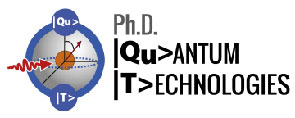Speaker
Description
In these lectures, I will present the state of the art and the new perspectives in the theoretical and experimental study of analog models of quantum field theories in flat, curved, or time-dependent backgrounds using condensed matter and optical systems.
After a brief presentation of the general concept of analog model, I will review milestone theoretical and experimental works on Hawking emission of phonons from acoustic horizons in trans-sonic flows of ultracold atoms. In particular, I will highlight the crucial role of density correlations in providing an unambiguous signature of Hawking emission - the so-called Balbinot-Fabbri moustache.
After introducing the general concept of quantum fluid of light and reviewing milestone experiments in Bose-Einstein condensation and superfluidity, I will sketch the on-going efforts towards the observation of Hawking emission in these optical systems and the advantages/disadvantages introduced by their intrinsically non-equilibrium condition. In particular, I will outline an unexpected interplay between Hawking emission and the quasi-normal modes of the black hole and I will discuss its possible consequences on the zero-point fluctuations of the gravitational field around astrophysical black holes.
I will then move to superradiant effects in different geometries. Based on the textbook theory of parametric amplification and oscillation in optics, I will first introduce the general concepts of superradiant scattering, superradiant quantum emission and superradiant instabilities in quantum field theories, then I will move to specific geometries: in rotating configurations, the concept of ergoregion instability provides an intuitive understanding of the well-known instability of multiply charged vortices; introduction of synthetic gauge fields in planar geometries extends the range of space-time metrics that can be generated and allows for analytical insight into superradiant phenomena using quantum optics concepts. This shines new light on the subtle relations between superradiant scattering, quantum superradiant emission and superradiant instabilities and suggests how quantum optical phenomena might play a role in astrophysical processes.
Finally, I will outline the on-going investigations in the direction of observing back-reaction effects of the quantum field onto the background: the crucial impact of quantum fluctuations of the quantum friction force is first highlighted in single-mode configurations amenable to circuit-QED realizations for which microscopic theoretical insight is available. I will then switch to cosmological models that may be investigated on cold atom platforms, in particular to investigate the preheating stage of the early Universe at the end of inflation: here, quantum-fluctuation-induced mechanisms for the decay of the inflaton field are identified, as well as unexpected channels for decoherence under the effect of quantum fluctuations of the parametric particle creation effect. I will conclude by sketching the outstanding problem of the back-reaction of Hawking emission onto a black hole and its relation to celebrated information paradoxes in gravity.

